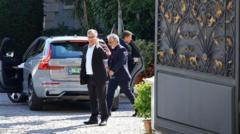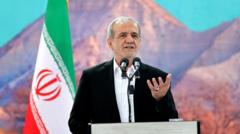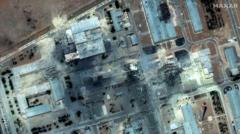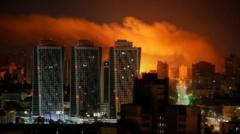**The Tehran Museum of Contemporary Art houses masterpieces from icons like Picasso and Pollock, showcasing a cultural bridge between Iran and the world.**
**Hidden Treasures: Tehran's Remarkable Art Collection Unveiled**
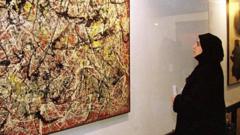
**Hidden Treasures: Tehran's Remarkable Art Collection Unveiled**
**Iran's wealth of modern art remains largely undiscovered, a significant legacy in the heart of Tehran.**
The Tehran Museum of Contemporary Art (TMoCA) is a site of intrigue and wonder, containing a collection often considered one of the most significant troves of modern art outside the Western world. Hidden for decades beneath the city's streets, it houses an astounding array of artwork from titans like Pablo Picasso, Vincent Van Gogh, Andy Warhol, and Jackson Pollock—referred to as the “crown jewels” of the art world, with an estimated worth of around $3 billion.
Since the 1979 Iranian Revolution, only a fraction of these masterpieces has been on public display, as many works were deemed too provocative or politically charged for a post-revolutionary Iran. However, in recent years, visitor interest has surged, leading to major exhibitions like the Eye to Eye showcase, which debuted in October 2024 and was extended through January 2025 due to overwhelming public enthusiasm. This exhibition revealed over 15 previously unseen pieces, including a Jean Dubuffet sculpture making its first appearance in Iran.
Particularly notable artworks include Warhol’s portrait of Farah Pahlavi, the last queen of Iran, and pieces by Francis Bacon that juxtapose intimate vulnerability with political undertones - a hallmark of TMoCA's eclectic collection. The museum itself, opened in 1977 through the efforts of Farah Pahlavi and designed by architect Kamran Diba, originally aimed to bridge modern and contemporary art within Iran and connect it internationally.
However, the art landscape shifted dramatically following the revolution, leading to many artworks being locked away, as they were considered inappropriate for public viewing. It wasn’t until the late 1990s, during a period of reform, that the museum began to reclaim its status as a premier art institution, re-exposing its treasures to a world eager to rediscover the richness of Iranian artistry.
However, the challenges faced continue; the UK Foreign Office advises against travel to Iran, posing significant barriers for art enthusiasts and scholars hoping to view the impressive collection in person. Despite these adversities, TMoCA remains a vital cultural hub, safeguarding and showcasing vital pieces of modern art history right in the heart of Tehran, fostering a place where art can still thrive amidst the complexities of global politics.
Since the 1979 Iranian Revolution, only a fraction of these masterpieces has been on public display, as many works were deemed too provocative or politically charged for a post-revolutionary Iran. However, in recent years, visitor interest has surged, leading to major exhibitions like the Eye to Eye showcase, which debuted in October 2024 and was extended through January 2025 due to overwhelming public enthusiasm. This exhibition revealed over 15 previously unseen pieces, including a Jean Dubuffet sculpture making its first appearance in Iran.
Particularly notable artworks include Warhol’s portrait of Farah Pahlavi, the last queen of Iran, and pieces by Francis Bacon that juxtapose intimate vulnerability with political undertones - a hallmark of TMoCA's eclectic collection. The museum itself, opened in 1977 through the efforts of Farah Pahlavi and designed by architect Kamran Diba, originally aimed to bridge modern and contemporary art within Iran and connect it internationally.
However, the art landscape shifted dramatically following the revolution, leading to many artworks being locked away, as they were considered inappropriate for public viewing. It wasn’t until the late 1990s, during a period of reform, that the museum began to reclaim its status as a premier art institution, re-exposing its treasures to a world eager to rediscover the richness of Iranian artistry.
However, the challenges faced continue; the UK Foreign Office advises against travel to Iran, posing significant barriers for art enthusiasts and scholars hoping to view the impressive collection in person. Despite these adversities, TMoCA remains a vital cultural hub, safeguarding and showcasing vital pieces of modern art history right in the heart of Tehran, fostering a place where art can still thrive amidst the complexities of global politics.

